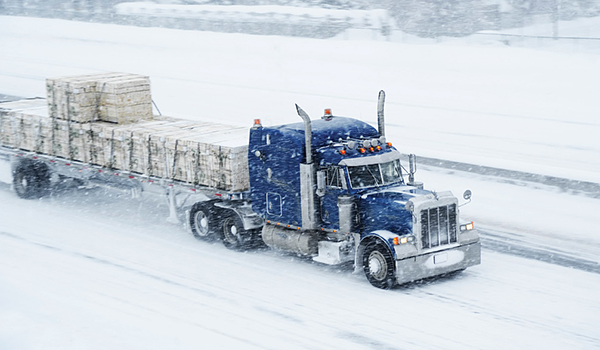Hot Tips to Stay Safe This Winter

"Slow the hell down and drive defensively." This is a crucial step in remaining safe on the road, especially during the winter months when driving conditions worsen, say executives at Lynden Transport.
As harsh weather and poor driving conditions are universal concerns for drivers and fleet managers across the country, Jim Maltby, corporate director of health, safety, security and environmental management, and Tyler Bones, safety manager of Lynden Alaska West Express, offer five tips for navigating the challenges of winter driving.
1. Have a clear ‘Stop Work’ authority program.
Work to identify fatigue and support drivers in their decisions to stay off the road. Empower drivers to make decisions. If a driver deems it unsafe to travel, then they should find a safe place to wait out the storm. Video-based safety programs, like SmartDrive, can help in identifying the issue before it becomes dangerous.
2. Plan the routes.
It’s important to know the current weather conditions and forecasts for the area drivers are traveling through. Encourage drivers to travel on major highways as they’re more likely to be plowed and maintained. Always be sure your drivers tell someone the route they’re driving.
Work closely with your state truck association as they get weather forecasts immediately and distribute them just as fast. Be sure to post these forecasts in your terminals and email them to keep all parties informed. Keep your dispatch communications working and functional.
3. Encourage safe driving habits.
Encourage drivers to stay focused and keep their head in the game. Ensure drivers are practicing top notch safety habits while on the road, including avoiding distractions and keeping focus. Remind them to keep their cell phone charged but do not use while driving.
Train drivers to slow down and allow more space between them and the vehicles around them, as well as maintain more braking distance than they do in decent weather.
If bad habits persist, work to identify and target persistent bad habits with constructive coaching.
4. Check equipment.
Ensure drivers take extra time to conduct a thorough equipment check before heading out on the road. Be sure windshield wipers are in excellent condition. Remove built-up snow on tractors and trailers. Verify that there is plenty of fuel and all fluids are full. Check tires and make sure chains are in perfect condition. Confirm drivers have crucial survival supplies including enough food and water, as well as a flashlight. No matter where they are, truckers can face unexpected life and death situations.
5. Arm drivers with survival gear.
Remind drivers to be prepared for long delays. Have tool kits to ensure drivers can make field repairs so they can get to a safe haven. Have arctic gear—winter boots, coveralls, gloves, sleeping bags, portable heaters, water heater, etc. Stock up on food, water and dry goods. Check emergency survival kit to ensure everything is working. Be sure gear is readily accessible and ready to grab in case the driver has to abandon their vehicle.
